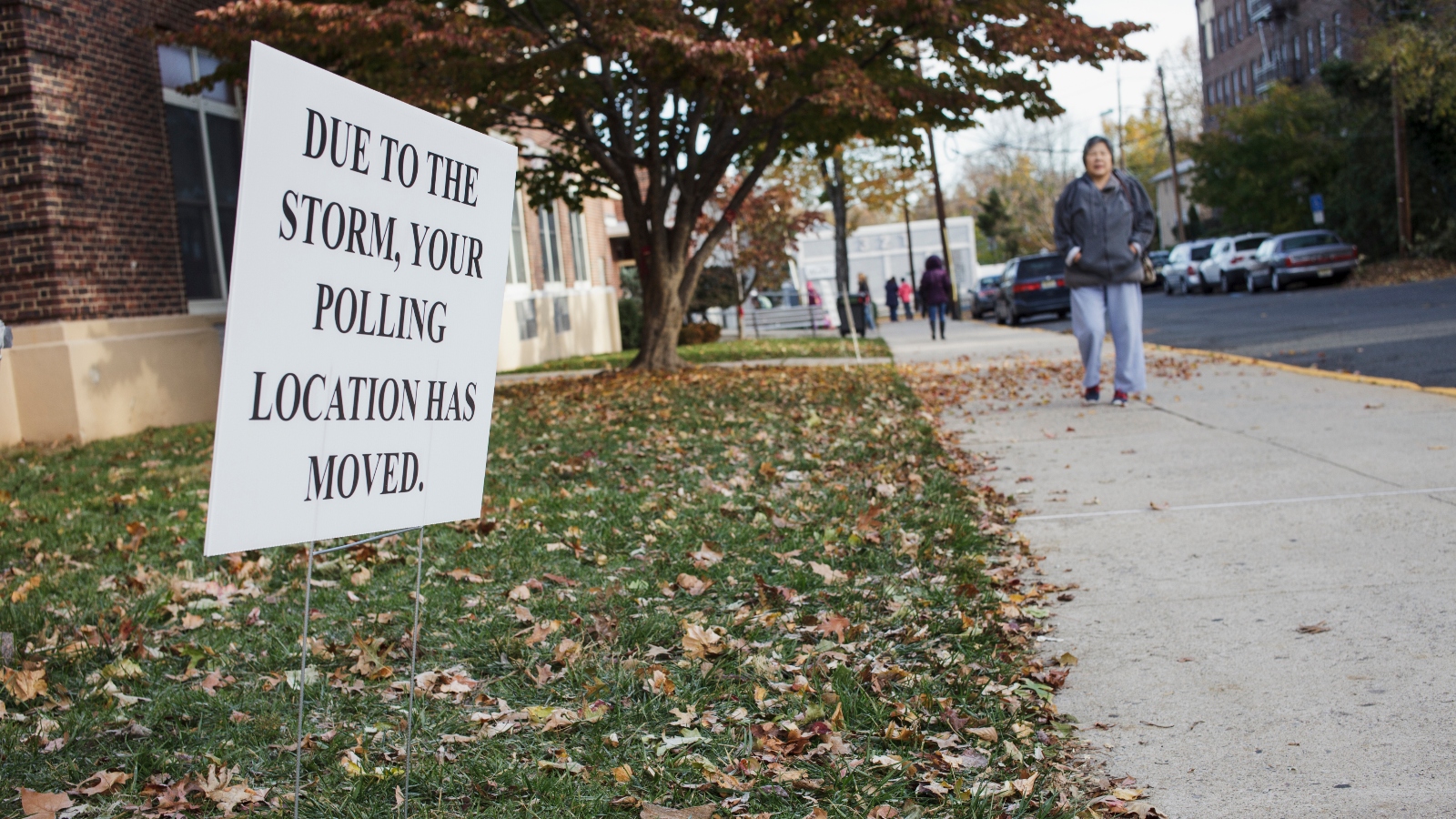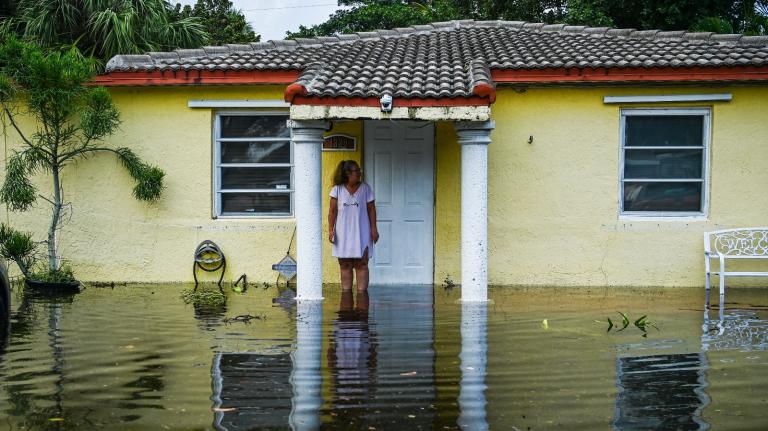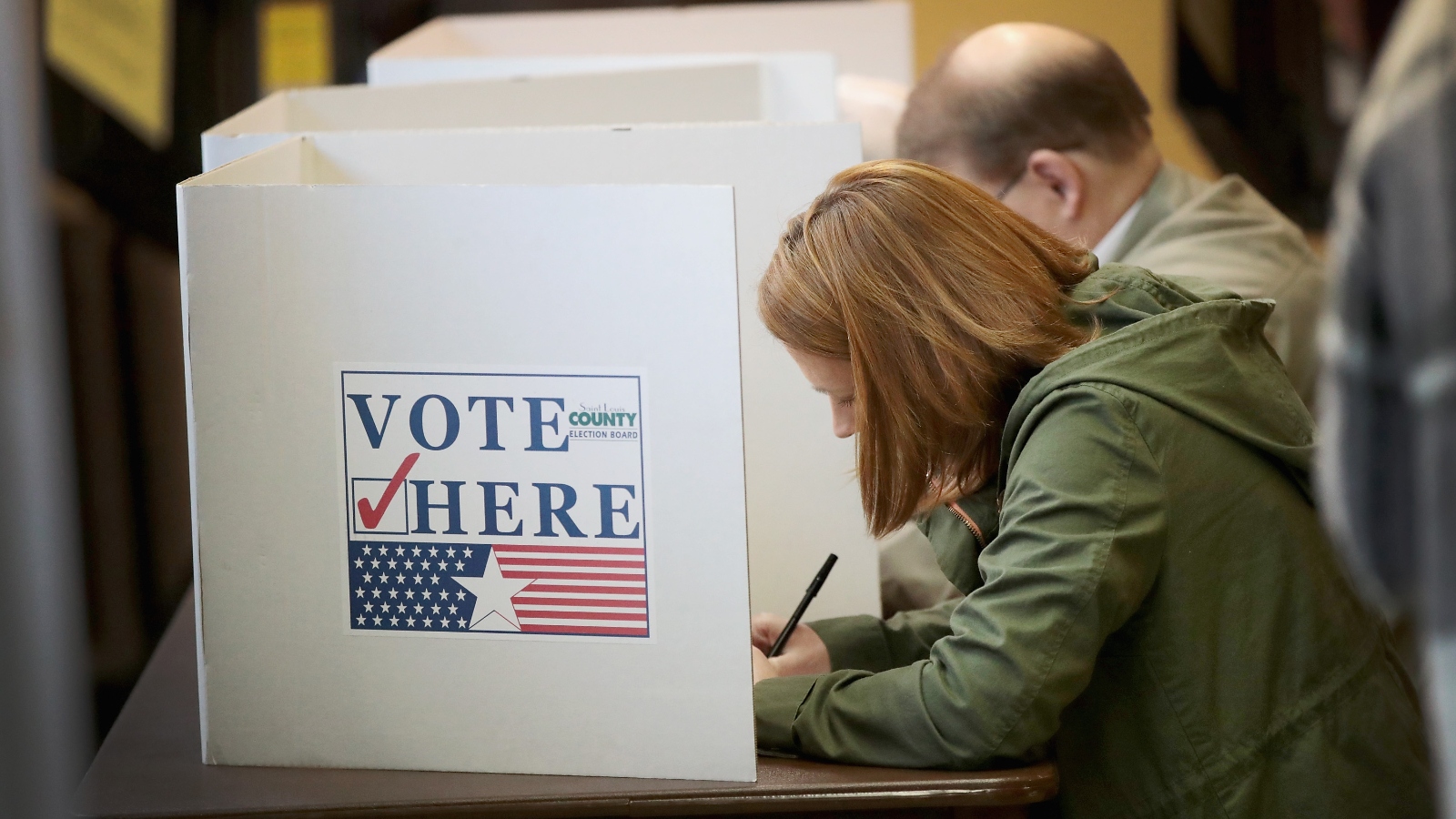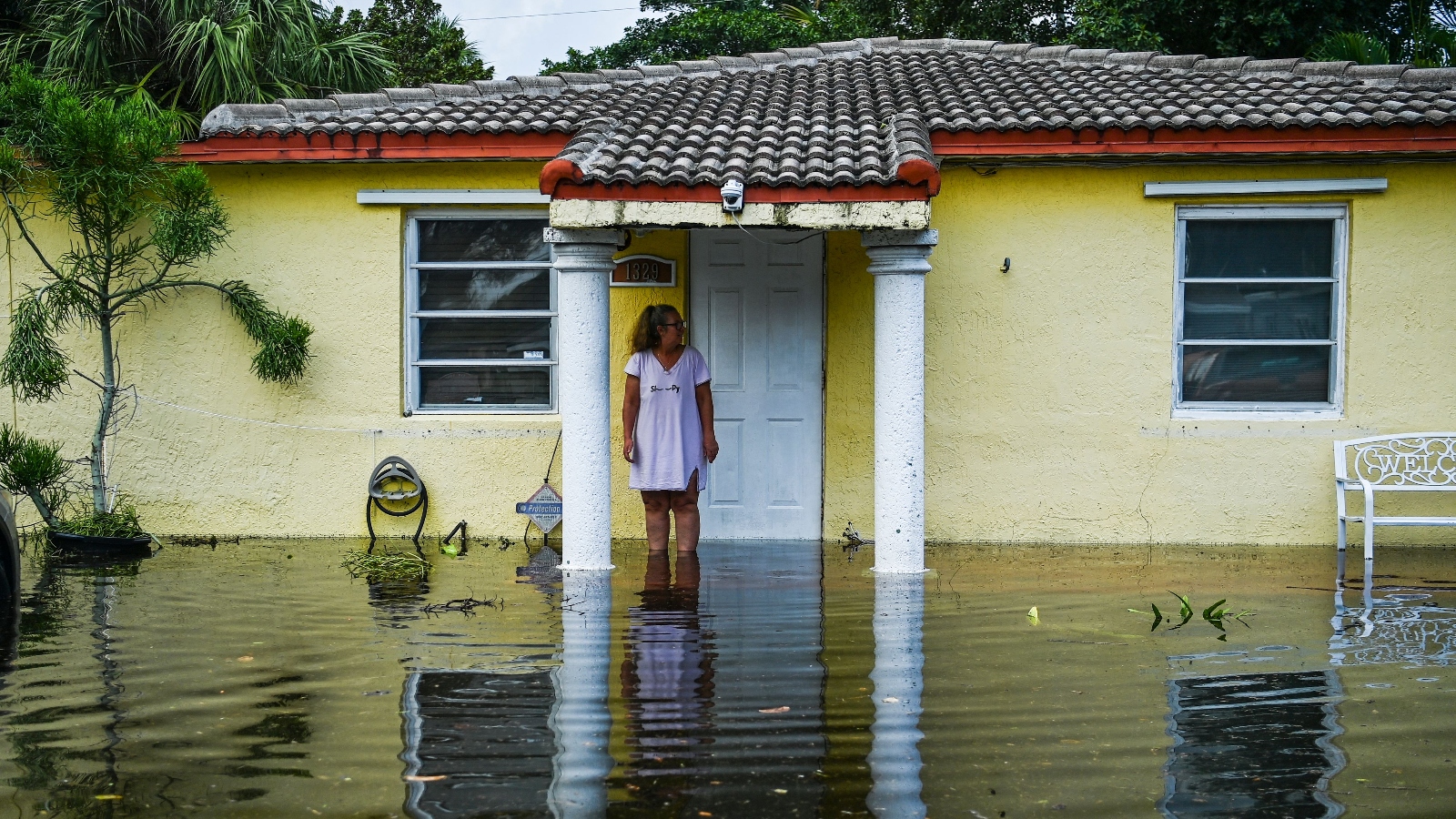Update, October 3: With just weeks to go until Election Day, Hurricane Helene has destroyed critical infrastructure and displaced thousands in North Carolina and several other states. State and local officials are scrambling to restore basic services. It’s still possible to vote if you live in western North Carolina, even if you’ve been displaced from your home, but time is of the essence. Here’s what you need to know.
- Registering to vote: The voter registration deadline for North Carolina is Friday, October 11, at 5 p.m. Eastern time. If you have a North Carolina driver’s license, you can register for free online. Remember that the county where you register is the county where you must vote, whether in person or by mail.
- Requesting a mail-in ballot: Voters in North Carolina can request mail-in ballots, also known as absentee ballots, through this website. Under state law, your ballot must reach your county election office by 7:30 p.m. on Election Day, Tuesday, November 5, or it won’t count. Given disruptions to mail service, experts say that it’s best for voters to request absentee ballots by Tuesday, October 22, at the latest. This will give the Postal Service a few days to bring you the ballot and a few days to bring it back to your county elections office, with a few days of wiggle room in case of days.
If you’ve already requested a ballot, but you never received it due to the flooding, or you never mailed it back, you can request a new ballot. The old ballot won’t count and you don’t need to worry about what happened to it. - Early voting: Under North Carolina law, every county must offer at least 13 days of early voting at a minimum of one in-person voting location. Even those counties affected by Helene will still need to open up early voting sites, though they may be in temporary locations or in different places than they have been in the past. Larger counties, like Buncombe County, which includes Asheville, have in the past offered several different early-voting sites, but may offer fewer this year.
Early voting in North Carolina begins on Thursday, October 17, and runs through Saturday, November 2, but some counties affected by Helene may not be able to offer early voting by the 17th. The state legislature may give them a few days’ leeway, which might mean that early voting begins later in your county.
In the weeks leading up to the 2020 presidential election, Louisiana experienced a parade of devastating hurricanes. On August 27, Hurricane Laura hit the state’s southwest coast as a Category 4 storm, bringing winds up to 150 miles per hour, extreme rainfall, and a 10-foot storm surge. Hurricane Delta hit the same region six weeks later as a Category 2. Hurricane Zeta then hit the southeast part of the state a week before the election. The storms made voting a chaotic and difficult process: polling locations damaged, thousands displaced from their state, all the necessary paperwork and IDs lost to floodwaters.
It is an experience that many Americans have found themselves in, or will in the future, as climate change increases the frequency and intensity of natural disasters. According to recent polling from the Pew Research Center, seven in 10 Americans said their community experienced an extreme weather event in the past 12 months, including flooding, drought, extreme heat, rising sea levels, or major wildfires.
The aftermath of a disaster can be terrifying and traumatic, and many victims struggle to secure basic necessities such as food and shelter, or to fill out paperwork for disaster aid and insurance. Finding accurate information about where and how to vote is even harder — so hard, in fact, that many people who have experienced disasters don’t bother to vote at all.
With experts forecasting a historically active hurricane season and a rash of wildfires breaking out across the West, it’s more important than ever to be prepared for disruptions to the voting process in what stands to be a pivotal election year.
The guide below aims to help you navigate early voting, absentee voting, and election day, the rules of which vary widely across the U.S. (Still not registered to vote? You still have time: Find your state’s voter registration rules here.)

James Leynse/Corbis via Getty Images
In-person voting
If a disaster strikes, the governor can extend voting deadlines, allow ballots to be forwarded to a new address, allow local officials to change or add new polling places, or postpone municipal elections. Those rules are different depending on the state, and in the wake of a disaster that information may be hard to find.
The U.S. Vote Foundation has a tool to access your county election office’s contact information. These range by state; they’re typically county clerks, supervisors, auditors, boards of elections, or election commissions. You can try to contact these offices, but it’s not guaranteed they’ll be able to answer the questions. You can also ask voting rights groups in your area and watch local news for any changes or updates.
In the wake of a disaster, first confirm where you should be voting. Has your polling place been damaged or moved? If multiple locations are combined or election day volunteers are scarce post-disaster, be prepared to stand in long lines to vote. If you’re waiting in the heat, make sure to wear comfortable shoes and appropriate clothing (21 states prohibit campaign apparel, so keep that in mind), and bring water. Here are some other resources on heat waves.
Was your car damaged in a disaster? Need a ride to the polls? Some ride share services and public transit systems offer free rides on Election Day. Here’s more information.
Early voting
Most states, Washington D.C., Puerto Rico, Guam, and the U.S. Virgin Islands offer some form of early voting, which is voting in-person before the election anywhere from a few days to over a month early, according to the National Conference of State Legislatures. However, the hours, locations, and timing differ for each. Three states — Alabama, Mississippi ,and New Hampshire — do not allow early in-person voting.
Early in-person voting is a useful option if you’d like to avoid lines on election day or will be out of town. It’s also an option for people who live in a region of the country prone to natural disasters or have been recently hit by one. In-person voting on election day, which comes at the tail end of “danger season,” may not be a possibility or a priority. Go here to see the specific rules around early voting in your state.

Absentee ballots
Absentee voting is often called “mail-in voting” or “by-mail voting.” Every state offers this, but some require you to meet certain conditions, like having a valid excuse for why you can’t make it to the polls on election day. Absentee voting can be a particularly useful tool for people who have been recently displaced by extreme weather, or are at risk of being so. It also safeguards voters who live in the hottest parts of the country, where heat can make waiting in long lines dangerous.
The League of Women Voters explains absentee voting rules by state here. If you reside in a county that gets a federal disaster declaration after a disaster hits, there may be changes to these processes that can offer you more time and flexibility.
Since it’s the height of hurricane season, we’ve included the registration and absentee ballot request deadlines for hurricane-prone states below:
Florida: Registration deadline is October 7. If voting by mail, you must request an absentee ballot 12 days before the election, no later than 5 p.m. (more here).
Alabama: Registration deadline is 15 days before the election. If voting by mail, request a ballot five days before the election if you’re applying in person, or seven days before if you’re mailing your request (more here).
Mississippi: Mississippi does not have online registration. The deadline is October 7, 30 days before election day. The last day to request an absentee ballot is five days before election day (more here).
North Carolina: Voter registration deadline is 5 p.m. Friday, October 11, 2024. You must request an absentee ballot no later than a week before the election (more here).
South Carolina: Registration deadline is October 7, 30 days before the election. You must request an absentee ballot no later than 5:00 p.m. on the 11th day prior to the election (more here).
Louisiana: Online registration deadline is 20 days before election on October 15; in-person or mail is 30 days on October 7. Read the absentee ballot requirements here.
Georgia: Registration deadline is October 7, 30 days before the election. You can request an absentee ballot starting 11 weeks before the election (more here).
Texas: Registration deadline is October 7, 30 days before the election. If voting by mail, you must request an absentee ballot 11 days before the election (more here).

Joe Raedle/Getty Images
Voter ID laws
Each state has a different voter ID law. Some require photo identification, others require a document such as a utility bill, bank statement, or paycheck; some require a signature. The National Conference of State Legislatures has a breakdown of these rules here.
If your ID gets destroyed in a flood, fire, or tornado, your state may be able to exempt you from showing an ID at the polls. For instance, after Hurricane Harvey, Texas residents who lost their ID to floodwaters could vote without one if they filled out an affidavit stating that the voter didn’t have identification because of a natural disaster declared by the governor. Your state may also waive the fees associated with getting a new ID.
The best way to find this information out is to contact your county clerk or other election official, or contact a voting rights group in your area.
Know your rights
Just as there are strict rules in states around how people can cast ballots, there are also many others that dictate what happens outside of polling places. In most states, you can accept water and food from groups around election sites, but there is misinformation around whether or not it is legal. After the 2020 election, Georgia passed a law prohibiting this within a certain buffer zone. A judge struck down part of that law: there is no longer a ban on handing things to votes with 25 feet of them standing in line, but it’s still illegal to do so within 150 feet of the building where ballots are being cast.
Call or text 866-OUR-VOTE (866-687-8683) to report voter intimidation to the Election Protection Coalition. You can also find more information on voter rights from the ACLU.
Did we miss something? Please let us know by emailing community@grist.org.
Correction: This story misstated the return deadline for Georgia absentee ballots.





